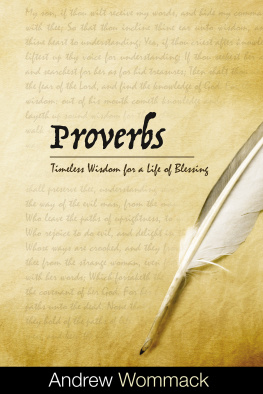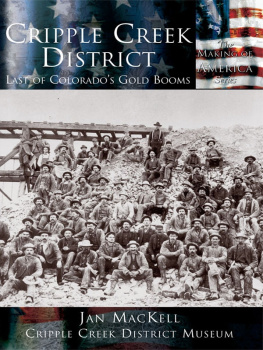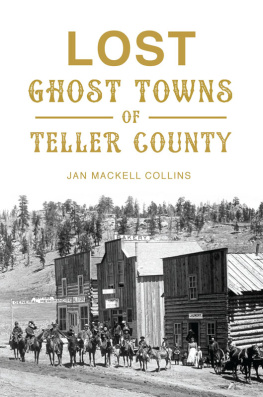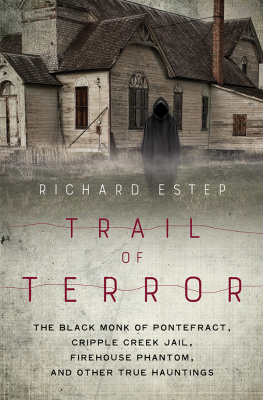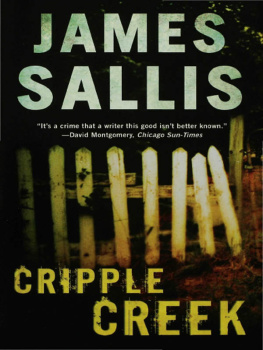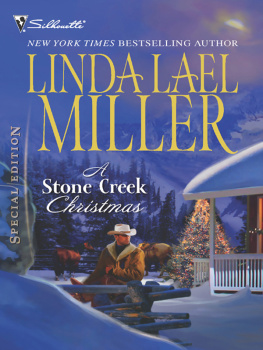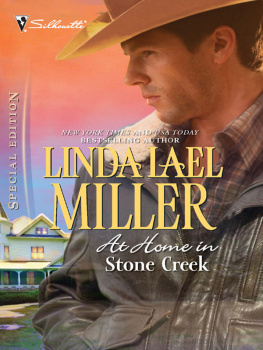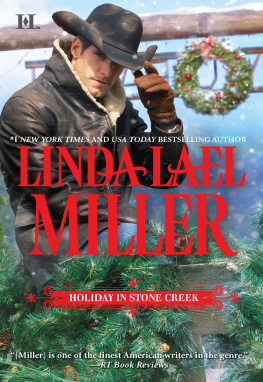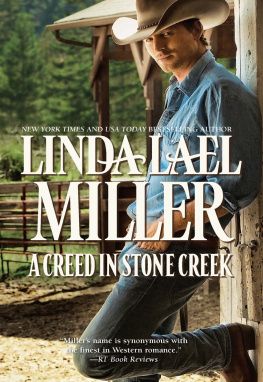Published by Haunted America
A Division of The History Press
Charleston, SC
www.historypress.com
Copyright 2018 by Linda Wommack
All rights reserved
First published 2018
e-book edition 2018
ISBN 978.1.43966.477.3
Library of Congress Control Number: 2018936078
print edition ISBN 978.1.46713.960.1
Notice: The information in this book is true and complete to the best of our knowledge. It is offered without guarantee on the part of the author or The History Press. The author and The History Press disclaim all liability in connection with the use of this book.
All rights reserved. No part of this book may be reproduced or transmitted in any form whatsoever without prior written permission from the publisher except in the case of brief quotations embodied in critical articles and reviews.
INTRODUCTION
Legend and lore are often woven within the history of Colorados past. Haunting history and ghost stories are particular examples. What better way to bring the two together than a recount of lively ghost stories in historic places? And what better place than the historic town of Cripple Creek, Colorado?
Cripple Creek is still the undisputed Greatest Gold Camp on Earth. A middle-aged cowpoke with some mining experience discovered gold in the area that became Cripple Creek in 1891. His name was Robert Bob Miller Womack, my great-great-uncle. In the nineteenth century, more gold was taken out of the Cripple Creek Mining District than any other mining district in the world. As with all mining towns, Cripple Creek entered into a slow demise shortly after the turn of the century. Following Cripple Creeks near-deathfor the town never did diemany of the old buildings sat empty for decades. The pioneer enterprising businessmen and -women, energetic lawyers, stockbrokers, mine owners and merchants became past history. Or did they?
During those idle years, Cripple Creek rebounded somewhat, and personalities abounded in the form of spectral apparitions. Folks would talk of seeing a ghostly figure in a window. Stories were whispered of doors slamming and objects moving when no one was in the room. The winter fog rolling off Mount Pisgah would often linger over the cemetery, lending an eerie presence to an otherwise peaceful repose for the dead.
Cripple Creekers have come to accept this. As a matter of routine, as they swept the floor, cleaned a windowsill or dusted a shelf, they would glance over their shoulders as if to assure themselves that they were indeed alone. Or were these anomalies actually visitors from the past?
I have always been curious about the possibility of supernatural occurrences. When I finally experienced what I believe were encounters of an eerie nature, ironically enough in Cripple Creek, I was no longer a skeptic, nor was I completely convinced. But I began exploring the possibility.
It began with all the interviews, visits and correspondence I underwent while researching my cemetery book, From the Grave. I would constantly be told of ghost stories and hauntings, particularly in Cripple Creek and Teller County. As I am the great-great-niece of Bob Womack, the man who discovered gold at Cripple Creek, this piqued my interest. I soon learned that Cripple Creek is believed by many in the know to be the most haunted city in the state.
As a historian, I naturally based my research on the history of the various buildings, places and structures that are said to be haunted. This often led to the who, what and why of a particular haunting. Because of their very nature, the few surrounding ghost towns and their poltergeist history were also included in this research.
Following the end of the mining era, many of the old buildings sat empty for decades. The ghosts of Cripple Creek and Teller County seem to still roam the area. When legalized gambling once again became a reality in October 1991, exactly one hundred years to the month of Bob Womacks gold discovery, the haunting stories seemed to gain a whole new audience.
To this day, over a century after Womack discovered gold, and though Cripple Creek is now more commercial than ever, there are still stories of unexplained footsteps, doors slamming and other mysterious occurrences in the Cripple Creek area.
Im inclined to think we are all ghostseveryone of us. It is not just what we inherit from our mothers and fathers that haunts us. It is all kinds of old defunct theories, all sorts of old defunct beliefs, and things like that. So wrote Henrik Ibsen in his 1881 book titled Ghosts. I suppose there is some sort of symmetry to such a notion. But I prefer to take a lighthearted attitude toward the paranormal phenomena of ghosts and hauntings.
Cripple Creek and Teller County have an unbelievable history of ghoulies, ghosts, goblins, long-leggedy beasties and things that go bump in the night. Friend and fellow writer Joanne Sundell wrote, Show me someone who doesnt love a ghost story and Ill show you someone who has no imagination.
Science, paranormal investigators and physics cannot explain the realms of the hereafter or provide a logical explanation of ethereal beings. But history and storytelling can bring a certain symmetry to the possible existence of a third dimension. And we must not discount the advancements in audio recordings, digital photography and electronic devices often used when encountering the unknown spirit world.
Many examples of paranormal investigations come from members of various ghost-hunting groups, as well as Michelle Rozell, director of the Outlaw and Lawman Jail Museum. Michelle was also instrumental in procuring many of the photographs that are included in this work; I am very grateful to her for her contributions. I would also like to thank Richard Termayne, director of the Cripple Creek District Museum, for allowing me full access to the amazing photo collection at the museum.
This is a collection of the history of the hauntings of Cripple Creek and Teller County.
CHAPTER 1
THE HAUNTING OF GOLD CAMP ROAD
Cripple Creek, somewhat secluded, is accessible by a few different routes. From Divide, Highway 67 south follows the old Midland Terminal Railroad into Cripple Creek. County Road 1 from Florissant takes the traveler into Cripple Creek. Likewise, County Road 4, known as the Gold Camp Road, runs into the town. This was originally a stage road and the roadbed for the Short Line Railroad.
From Old Colorado City, now a suburb of Colorado Springs, Gold Camp Road begins at Twenty-First Street. Located high in the rocky hills of Bear Creek Park is a series of three tunnels of the Gold Camp Road that some say are so haunted that many travelers would rather turn around than continue the journey. Five years after competing railroads, the Midland Terminal and the Florence & Cripple Creek, arrived in the gold mining camp, a third rail bed was being built from Colorado Springs to Cripple Creek. It was the Colorado Springs & Cripple Creek District Railroad, better known as the Short Line. The narrow-gauge line was financed by a group of Cripple Creek mine owners who believed a shorter route to the gold camp would bring more people, business and profit. To achieve that goal, the rails were built with switchbacks to gain the elevation of three separate levels. Portions of the rail bed were built right along the mountainsides and canyon walls. It snaked around the south side of Pikes Peak to reach Cripple Creek in less time than the competition.






